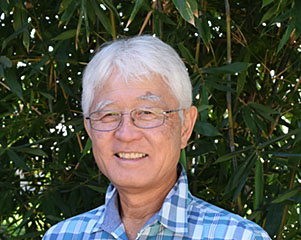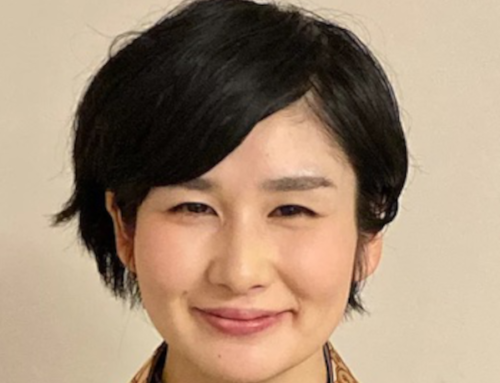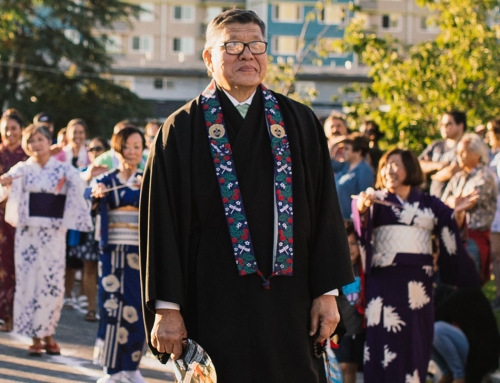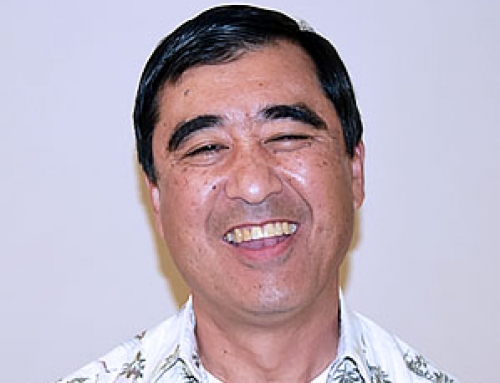President’s Message
January 2020
Happy New Year everyone, I hope all of you enjoyed a very joyful holiday. The holiday season is always a time of mixed emotions. It usually starts around Thanksgiving when you begin thinking of the different gifts you will need to go shopping for. At the same time, you are also looking forward to seeing and talking with friends and relatives. It’s a time when most of us reminisce about the past year while dining together.
As I mentioned before, I lived in a household with three generations. My grandfather, being a dedicated Buddhist did not want to spend money on a Christmas tree. My parents did not want to anger him so my dad would go into the forest and cut down a Foothill Pine tree. A Foothill Pine tree does not look like a traditional Christmas tree. It looks more like a Charlie Brown Christmas tree. My mother would pull out the lights and decorate the tree. No matter how many lights we hung on a Foothill Pine tree, it never looked the way we envisioned a Christmas tree should look so we had to make do with the foothills pine tree. As I grew up, I understood and am thankful to my parents for providing memories of what they did to make my Christmas enjoyable.
In the fifties and sixties, Mochitsuki day was always wet and cold. In the early morning of Mochitsuki, people were running around getting everything set up. Ojiichan would tell us not to stay in the house, watch TV or play with our Christmas toys. We were told to go out and participate in the mochi-making process even if there was really nothing for us to do. In the early times, I remember the family using a very heavy cement usu (150 lbs.) and “kine” made of cherry wood. I wasn’t big enough to participate in the mochi pounding. In the 60’s as the older generation was getting too old to pound with the “kine”, the family ordered a motorized mochi-making machine from Japan, similar to the ones the temple uses. That really sped up the process of mochi-making. However, after we were done with mochi making, a lengthy time was spent disassembling the machine and removing all the mochi in the gears and grinders. The second-best part of mochi-making was eating fresh roasted mochi with “an” (sweetened mashed red beans) which was done right on the hot coals. There’s something about the smell of toasted mochi that brings back memories. The best part of Mochitsuki was lunch. There were many wonderful things to eat; ozoni (mochi in broth), teriyaki chicken, chicken chow mein, namasu (daikon and carrot salad), chirashi zushi and many other things. You should be careful eating mochi, people choke while eating mochi every year.
On New Year’s Day, my father and Ojiichan would leave in the morning to make the rounds to the neighboring families. They would not come back until late afternoon. We would also have visitors come to our house, my mom and Obachan would be busy all-day serving food and drink and entertaining the guests that would stay a short time and then leave for the next neighbor’s house. It was nice to see that eventually we would invite people like the Kojetins and the Bolins over for some Japanese New Year’s hospitality.
It’s a shame that this tradition of visiting friends and neighbors on New Year’s Day is becoming a thing of the past. The Issei (first generation) and Nisei (second generation) have taken this tradition with them. Sansei (third generation), Yonsei (fourth generation), Gosei (fifty generation) are self-reliant and do not feel the importance of close social connections in the same manner as of earlier generations. Also, many families are two income households and cannot afford to spend time away from work creating traditional Japanese cuisine which take days to prepare.
These are my memories from 50-60 years ago. I hope that the new generation will have memories they can keep and reminisce in their “golden years”.
Lastly, let’s all try to make 2020 another good year to add to our collection of wonderful the memories.
Happy New Year,
Gassho,
Ed




